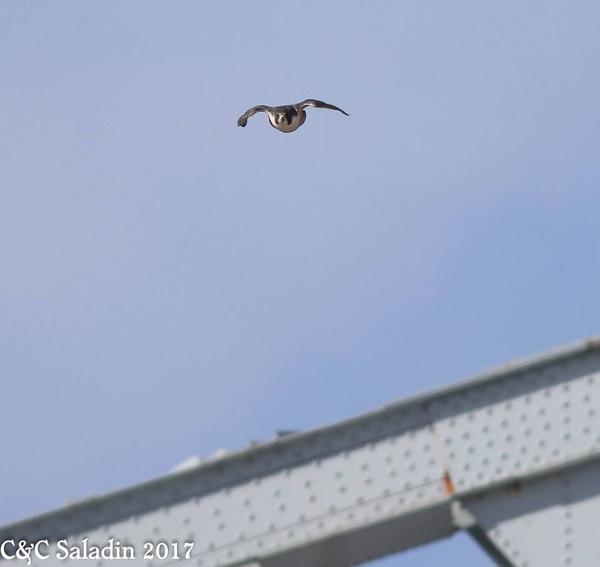
13 December 2017
This is the last thing a pigeon wants to see … and sometimes it is.
On Monday I went down the Ohio River to find birds at Rochester Riverfront Park. It was a disappointing trip for the most part with only the usual suspects — Canada geese, mallards and ring-billed gulls — until I looked at the big black railroad bridge that spans the Ohio River from Monaca to Beaver. (Click on the photo below for a larger view of the bridge.)
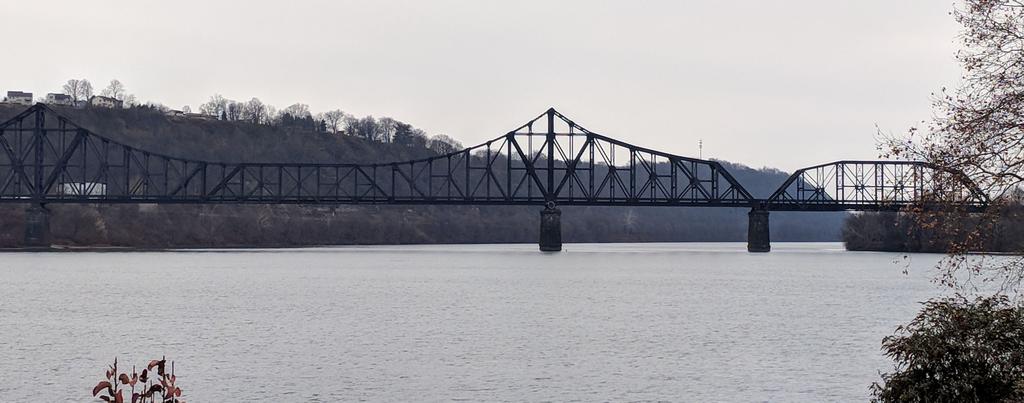
There was a peregrine falcon at the top of the central tower … here.
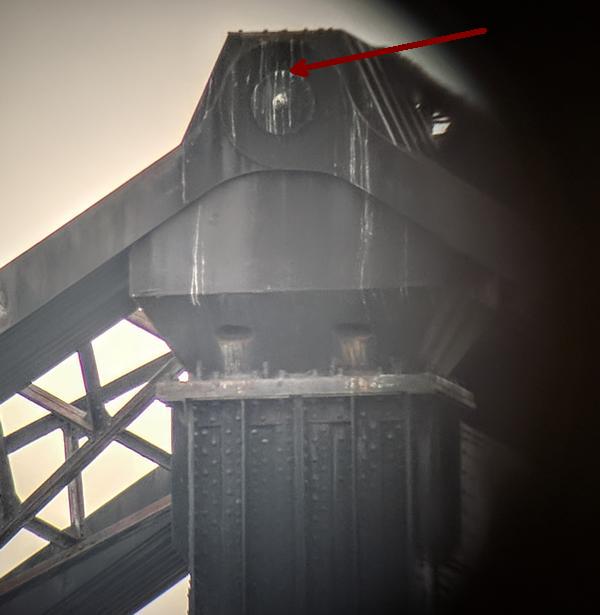
As I watched, the peregrine flew off the tower flapping hard downriver. She’d seen a second peregrine in the distance chasing a pigeon toward the bridge, and the pigeon was escaping. She flew off to help her mate.
The peregrines corralled the pigeon in the air so it dove straight down to the water but one of them dove faster and hit it hard. Dead or stunned, the prey fell in the water and started to float away.
I thought they’d lost their meal. The peregines circled above the floating prey … and then the female flew low over river, skimmed the water with her talons, and picked it up.
Ta dah! She flew back to the bridge to pluck and eat. Here’s a very poor photo of her back while she was eating.
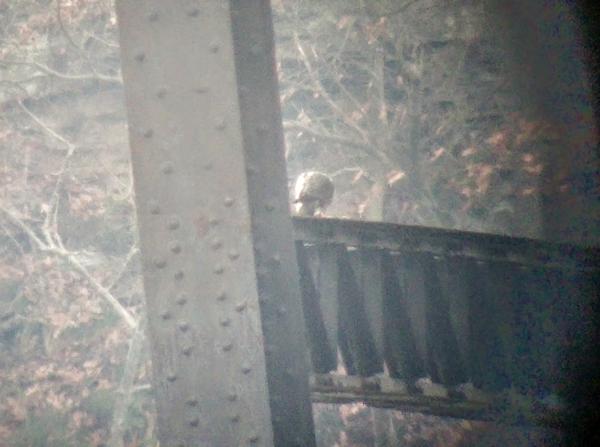
I’d never seen a peregrine grab prey out of the water. It made my day.
And no, I didn’t take that in-flight photo at the top of this article. That’s Chad+Chris Saladin’s photo of “Keystone” hunting pigeons near a bridge at Heritage Park in Cleveland, Ohio.
(top photo by Chad+Chris Saladin, remaining photos by Kate St.John)
p.s. The peregrine pair nests at this bridge but their young are never banded because the site is inaccessible. Where might they be nesting? Look at the holes in the tower below the perch. My guess is they nest in there. Both towers have holes with whitewash below them.
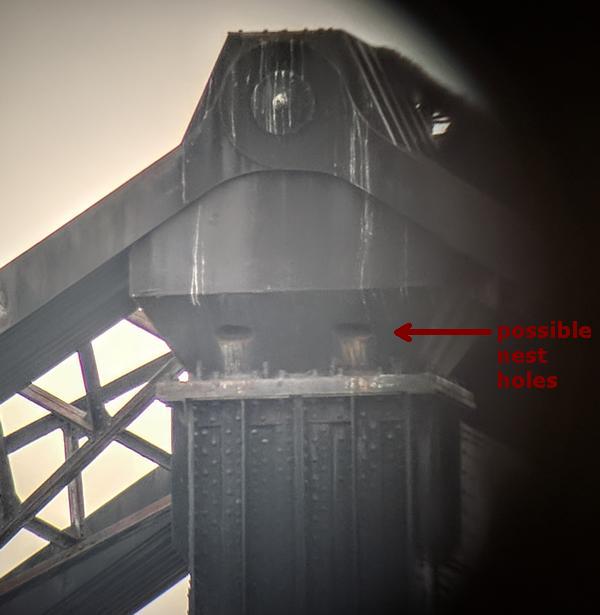
Yep, we had a juvie in Tarentum try to scoop a (still alive & ducking) pigeon out of the river (dropped for exchange by 69Z) back in August 2012. It was hilarious, especially with the boat traffic – juvie made about 20 passes at it – but the pigeon eventually sank out of sight.
Also saw 69Z drop a pigeon she had taken out of the lower chord beam once. She just sat on the near-side pier railing and watched it float away. Never made an attempt to retrieve it.
Well hopefully the one who ended up with lunch will pay it forward some day. 🙂
Hi, Kate. I have a hawk question for you. Yesterday about 3 p.m. all the smaller birds made a quick exit from the feeders. I looked up to see what was bothering them and I saw a long dark grey hawk whose shape resembled the Concorde. It spread its tail feathers and they were striped – I looked at my bird guide and it looks a lot like a Northern Goshawk or a Northern Harrier. Would that be possible at this time of year? I live near the Allegheny River. Thanks.
Deb, the two birds you mention would be unlikely in your location. My guess is that it was a Cooper’s hawk. Females are larger than males.